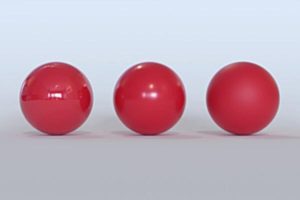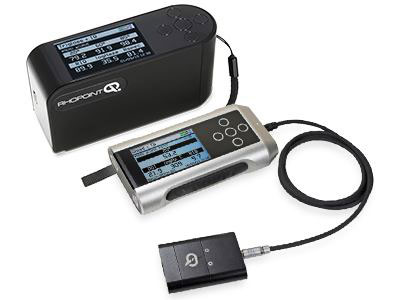Understanding Gloss Standards & Units
In case you are in the beginning stages of learning about gloss measurement, there are certain differences the human eye can detect. When measuring at 60º, the detectable gloss differences depend on the gloss level of the sample. For example, a 3.0 GU gloss difference may be easily detected on one surface, but not another. When measuring a gloss difference of 3.0 GU on a matte surface measuring around 5 GU would be visible with the naked eye. However, measuring the same difference on a high gloss coating measuring around 60 GU would be extremely difficult to notice.
The true way to determine tolerances for your products would be experimentally, by preparing printed samples at different gloss levels that you can show to directly to customers or internal “experts” to receive the proper feedback.
 Another way would be to use a 20/60/85 degree Tri-Gloss instrument. By using the 85º viewing angle of gloss you would have more sensitivity to differences in gloss below 10 GU @ 60º and by using a 20º viewing angle of gloss would have a higher resolution on high gloss coatings (above 70 GU @ 60º). The advantage of using 20/60/85 degree Tri-Gloss instrument is that there is more equality to the gloss differences, in our experience a gloss difference of 5 GU, when measured with the correct geometry is just visible to a trained observer. To learn more, check out our full line of gloss meters. If you have a specific question please contact us.
Another way would be to use a 20/60/85 degree Tri-Gloss instrument. By using the 85º viewing angle of gloss you would have more sensitivity to differences in gloss below 10 GU @ 60º and by using a 20º viewing angle of gloss would have a higher resolution on high gloss coatings (above 70 GU @ 60º). The advantage of using 20/60/85 degree Tri-Gloss instrument is that there is more equality to the gloss differences, in our experience a gloss difference of 5 GU, when measured with the correct geometry is just visible to a trained observer. To learn more, check out our full line of gloss meters. If you have a specific question please contact us.











